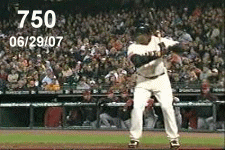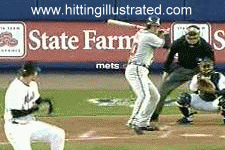the rubber band winding saets up a window of time and place where you can then control the stretch and fire to match the pitch.
For off speed, you canb keep the rubber band winding longer up to a point associated with back leg flex. The lower body is all happening in the back hip joint
For off speed, you canb keep the rubber band winding longer up to a point associated with back leg flex. The lower body is all happening in the back hip joint
I also wanted to add a comment from a guy who was with the Rangers and then the Pirates.
He thinks he is right about 50% of the time of what a pitcher is going to throw him. He studies the pitchers and has a good understanding of what he thinks he will get. So he starts his negative move/ load later when he thinks he is getting a curveball.
What would you guys think based on Toms comments above and the statement by the current player.






Comment